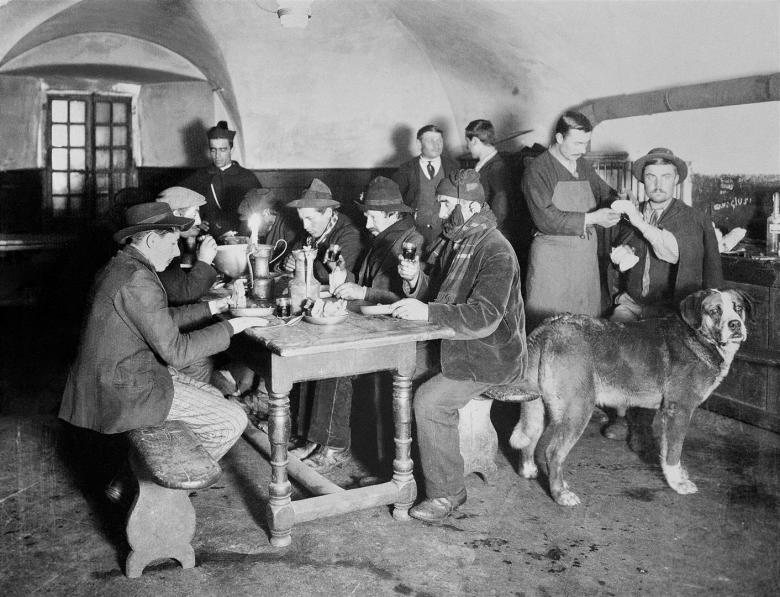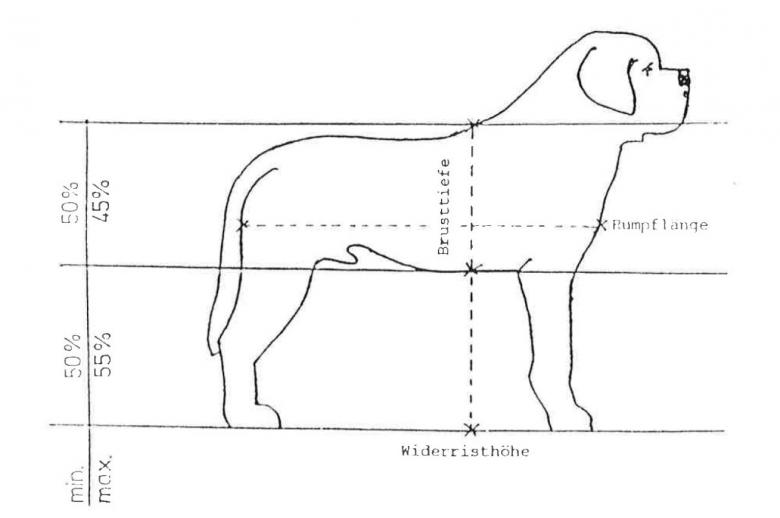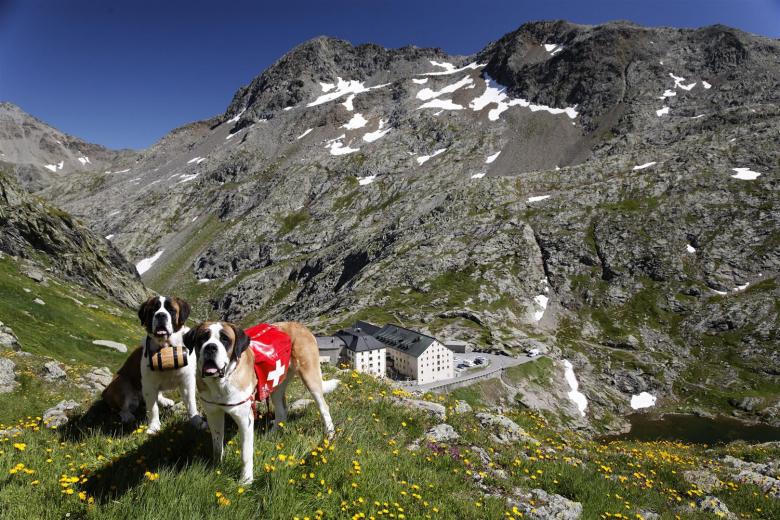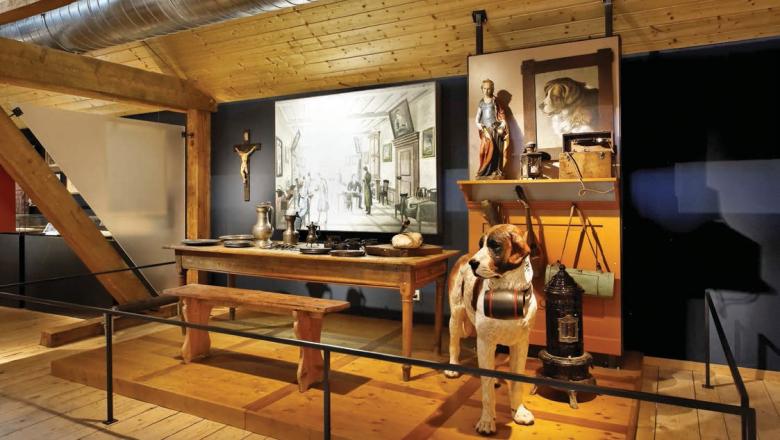Origins of the St Bernard dog
The hospice acquired its first dogs as late as 1660-70. It is said that the St Bernard is descended from dogs gifted to the monks by families from the cantons of Vaud and Valais. They were originally bred to guard and protect the hospice residents, thereby continuing on the good work of Bernard de Menthon to restore security to this mountainous region. However, the dog soon began to display remarkable abilities: rescuing travellers lost in the mountains and finding people buried under snow. The exploits of the St Bernard are extensively documented. According to legend, it was the tales told by Napoleon Bonaparte’s soldiers in 1800 that helped forge the reputation of this extraordinary canine.

Great St Bernard hospice © André Jullien/
Médiathèque Valais - Martigny
Key dates during the 19th century
1867 was a milestone for the St Bernard. That was the year when Heinrich Schumacher, a resident of Holligen (near Bern), created the first pedigree documents for the breed. A few years later (1884), a national dog register, the Livre suisse des origines (LOS), was launched. It provides a detailed list of pedigree dogs and their lineage. The first dog to feature in the register was a St Bernard called Léon. The 28 subsequent entries were also St Bernards. A few weeks later (March 1884), the Swiss St Bernard Club was founded in Basel. In 1887, at the International Cynology Congress, the St Bernard was finally recognised as a Swiss dog breed. Since then, compulsory standards have been set for the St Bernard breed.

Pedigree © Fédération Cynologique Internationale
The cask – an essential part of the St Bernard image
There are certain things which we instantly associate with the St Bernard. One of them is, of course, the cask. Although its origins are disputed, some contend that the little wooden barrel attached to the dog’s leather collar had a part to play in rescue missions. It was thought that the alcohol inside would temporarily restore blood flow. But what kind of alcohol was it? Some say rum, others say schnapps. Some even claim that it was a local concoction made according to a secret recipe. As the many depictions of the St Bernard prove, the little barrel, regardless of its contents, has contributed to the dog’s iconic image.

Great St Bernard hospice ©
Iris Kuerschner
The Barry Foundation – the oldest St Bernard breeding centre
In 2005, the Barry Foundation (in Martigny, canton of Valais) took over the St Bernard breeding kennels from the monks of the Great St Bernard Monastery. Why Barry? The Foundation is named after the most famous and heroic St Bernard of all. Barry, who was born in 1800 and died in 1814, is credited with over 40 rescues, and stories about him abound! The Barry Foundation is a recognised charity and a member of the Swiss St Bernard Club. As well as organising events and exhibitions that showcase the breed, it runs a museum (Barryland) which retraces the epic history of this exceptional dog. This is a great way of (re-)discovering how the St Bernard became a Swiss icon and captured the world’s imagination in the process. Today, countries without a St Bernard dog owners’ club are few and far between. The St Bernard has also enjoyed great success on the silver screen, often playing a starring role as the loyal and brave companion, upholding the time-honoured tradition of its forefathers.

Museum of St Bernard © Barry Foundation

